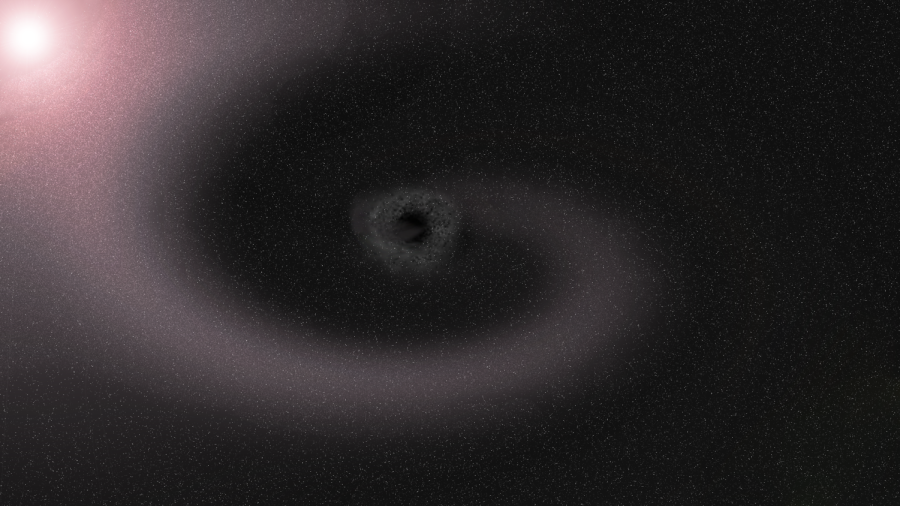Scientists create lab grown black hole in the Netherlands
December 13, 2022
A group of scientists created a lab-grown black hole to explain one of Stephen Hawking’s greatest theories — Hawking radiation.
The lab-grown black hole project was led by Ph.D. researcher Lotte Mertens at the University of Amsterdam in the Netherlands, allowing them to observe the thermal glow in their simulated event horizon.
Using a single–file chain of atoms to simulate an event horizon, Mertens allowed electrons to skip from one position to the next. This caused certain properties of the element to vanish, creating an event horizon that changed the wavelike nature of the surrounding electrons.
Causing a rise in temperature, the experiment imitated the flat nature of spacetime. Particles were then borne by the ruction in quantum fluctuations generated by the black hole’s ability to bend spacetime.
This reaction allowed the team of physicists to observe a ring of infrared thermal radiation, in the form of light, around the simulated black hole. Evidently, this observation is the hypothesized Hawking radiation.
Hawking radiation is caused by the tremendous gravitational pull of black holes, an attraction so great that these massive celestial bodies can trap light. Black holes can even bend the aether of space, causing an emission of particles due to fluctuations in quantum fields and leading to the dispersion of Hawking radiation.
Hawking predicted these findings in 1974 and theorized that the event horizons of black holes would bring photons into existence. Gravity would then distort these photons in the quantum fields, warping them and allowing for an uneven movement of particles that is classified as Hawking radiation.
This phenomenon has never been seen in open space due to the lack of advanced telescopic technology and concrete black hole detection methodologies.
Astrophysicists believe that it is highly improbable to ever study the true nature of black holes, thus making them doubtful that science will ever observe Hawking radiation in the cosmos.
Traveling to a black hole is out of the question, as the closest one is 1,566 light-years away from Earth’s Solar System. Furthermore, the number of dissipating Hawking photons is theorized to be infinitesimal compared to photons of other nearby objects. In other words, the radiation produces such a small amount of light that other celestial objects will outshine it.
Researchers around the world are highly interested in these findings due to Hawking radiation’s unique connection to the general theory of relativity and quantum mechanics. More importantly, the study of Hawking radiation may bridge the gap between Einstein’s theory of relativity and quantum mechanics.
The consolidation of these two areas of study would fundamentally change how science views the mechanics of the world and the larger universe.
Quantum mechanics seeks to delineate the behavior of particles using probability while the theory of general relativity tries to explain the behavior of gravity in spacetime.
Combining the two principles would help researchers like Mertens “in exploring fundamental quantum-mechanical aspects alongside gravity and curved spacetimes in various condensed matter settings.”
This experiment was a massive breakthrough in the study of astrophysics and was an enchanting peek into the cosmos’ secrets.








Joe Quigley • Sep 18, 2023 at 12:24 pm
I can’t think of anything more stupid than creating a black hole on earth.
How are you going to get rid of the damned thing once you’ve created it? How are you going to stop it from growing?
ROMAN ORDWAY PWYLL BLUE WOLF • Apr 6, 2023 at 8:27 pm
HOW CAN THIS EVEN EXIST BEYOND THEORY ? WE HAVE TO BE ABLE TO OBSERVE PHOTONS AT THE EVENT HORIZON: NOT TO KENTION VITGIL ARMSTRONG VOVRRED THIS MATERIAL 19 YEARS PRIOR TO P HAWKINGS THOUGHTS ON ANY OF IT?
JUST T WONDERING